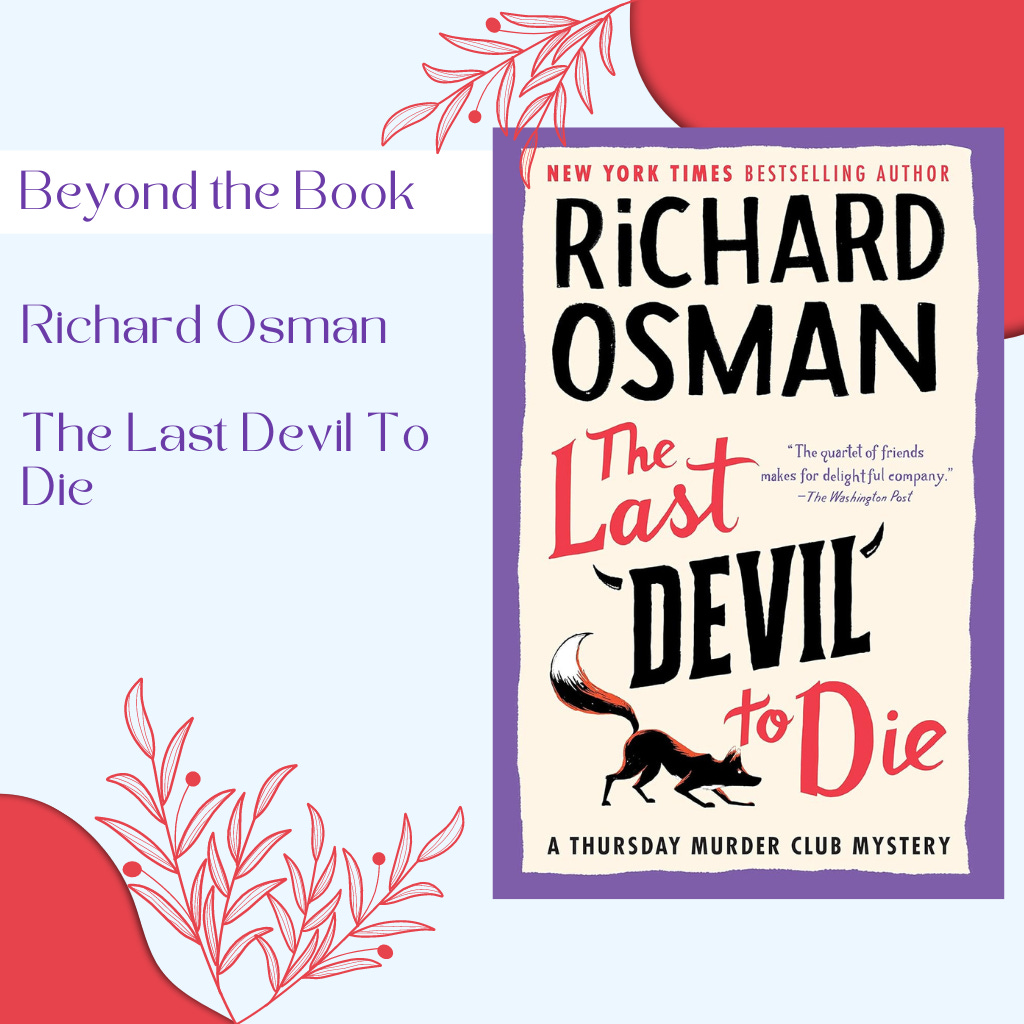I cannot deny that I eagerly await the release of a new installment in the "Thursday Murder Club" series year after year. As soon as I grab it at the bookstore, I rush home to carve out a few hours for myself to peacefully immerse in the story. For me, it feels like a special occasion.
Richard Osman has crafted a bittersweet and unique world with a sea of empathy, a healthy dose of humor, and a slow-burning crime plot in the fictional luxury retirement home of Fairhaven—a world that's a pleasure to delve into. I won't claim this book offers answers to life's big questions, but it's certainly a refreshing read after heavier tales like Hermann Hesse's "Beneath the Wheel" or Oscar Wilde's "The Picture of Dorian Gray."
From here on, the review contains spoilers. If you wish to read the story without any prior knowledge, delve into the novel first!
For some time now, the author doesn't narrate through all four main characters but predominantly uses a narrator and Joyce—the most communicative of the four retirees—to recount the tale, which, of course, begins with a murder.
The novel introduces new characters like "Computer Bob" who, with his tech-savviness, uncovers a scam committed against another new character, Mervyn. Bob also finds a way for the Murder Club members to be done with the midnight toast by 9 pm on New Year's Eve, watching the fireworks on TV, allowing them to go to bed early, as they wished.
Amid a slew of bad guys meeting their end, an antique-dealing woman is also murdered. What initially appears to be a series of drug theft-related murders takes a turn when it becomes clear that the stolen drug amount wouldn't warrant the immense risk associated with committing so many murders. I won't reveal what the real rivalry is about; if you're curious, read the novel.
I'd rather focus a bit on what intrigued me the most about the novel's human, non-criminal side. It's evident from previous installments that three of the "Thursday Murder Club" members grapple with some form of grief. Joyce mourns her late husband, Gerry, and even as she tries to connect with other men, she inevitably compares them to Gerry—and they never measure up.
Elizabeth, from one book to the next, mourns the happy years she spent with Stephen, as she increasingly loses him to advancing dementia.
While Ibrahim hasn't shared much about his past, in this installment, we learn of the deep-seated, unresolved grief behind his solitude. Ron is slightly sidelined in this novel. We don't learn much about him, except for some friction in his new relationship. Yet, his presence is palpable, as he often silently and inconspicuously acts as a pillar for the club.
Alongside the criminal threads—of which there are two in this novel—the most poignant is the farewell between Elizabeth and Stephen. The question is whether Stephen should be admitted to an institution with 24-hour supervision due to his escalating dementia or remain with Elizabeth. Halfway through the book, it's evident that this deeply loving couple faces an insurmountable problem. Elizabeth doesn't want to separate from Stephen or see him move to a home. Stephen doesn't want Elizabeth to transform from his wife to his nurse. In the end, they choose a third, and characteristically for Elizabeth, illegal solution. This resolution, though painful, is acceptable to both. It grants a genuine farewell that Stephen can clearly and consciously experience and ends a life and a relationship that would have brought them immense suffering.
"The Last Devil to Die" is just as human and lovable as previous series installments. However, I feel that Richard Osman now more boldly delves into themes he previously flirted with but never deeply explored.
The topic of a dignified death, how friends react, how two people handle such a grave decision regarding their own lives, and the nature of final moments all prompt us to ponder these questions.
While every "Thursday Murder Club" installment introduces various facets of aging—something we should all prepare for, given that the lucky ones will eventually face these issues—the series isn't depressing. Instead, it's a bouquet of novels that, besides entertaining, offers useful insights on handling old age, solitude, and grief. It emphasizes the importance of community and illustrates that one may not always have their children around, necessitating the creation of new relationships and meaning in life. All this requires patience and tolerance. Observing the diverse club members and their quirky friends and acquaintances, it's evident that harmonizing various interests, personalities, and worldviews is essential for the complex yet entertaining system to function.
One more thing I'd like to highlight from the book is the fox that also makes it to the cover. Snowy, as Stephen calls the white-tufted-eared fox that visits their garden every day, dies towards the end of the novel. Stephen and Bogdan set out together to find it and eventually discover its body not far from the house. It's evident that the bond that formed between Stephen and Snowy, even if it only deepened through their glances exchanged through a window, was no accident. Snowy, too, is nearing the end of his life, much like Stephen. Elizabeth feels this, which is why she chases the fox away every time she sees it. The fox reminds her each time that Stephen does not have much consciously lived time left.
Foxes symbolize intelligence, ancient wisdom, perseverance, and the survival instinct, and many cultures view them as animals that know when it's time to act and when to remain still. Therefore, Snowy's death shows Stephen that it's time to make a decision, and he acts accordingly.
I suspect that in the next novel, we'll find out, among other things, how Elizabeth deals with the grief of losing Stephen and how the others help her cope.
As for me, I eagerly await the fifth installment of the Thursday Murder Club – hoping there's a fifth – possibly featuring a wedding or two, as the narrative is gently leading us in that direction.
In the meantime, I recommend reading the novel because, despite its serious themes, it's a pleasant, light-hearted entertainment! Lastly, a piece of advice for those less familiar with this series: don't expect a solely crime-centered, fast-paced, Agatha Christie-style narrative, because The Thursday Murder Club is as much a crime story as a latte is an espresso.
– Eszter
Here is my personal email for paid subscribers, you can ask personal questions and receive personalized answers to those you might not wish to ask publicly.
Some links above are Amazon affiliate links, and if you buy something through these links I may earn a small commission at no extra cost to you.
Related Article
Grief — The Emotional Mariana Trench
Home | Notes | Articles | Eszter’s Magic | Literary Bonbons | Short Stories and Guides | Beyond the Book | EWE Issues | Archive | About





